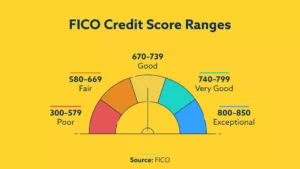
Normally there would be no action to take in order to remove old debts from credit reports. Once the credit reporting time limit has elapsed, the outdated information should automatically drop from your credit report.
However, if an error exists with the reporting date an old debt may not automatically fall off your credit reports. The Fair Credit Reporting Act dictates how long negative information can remain on your credit report and the credit bureaus must be in compliance.
An account could have an inaccurate date after it’s sent to a collection agency or collection agencies may give a debt new dates when reporting to the credit bureaus. This is called Re-Aging and it is illegal. A debt can pass from collection agency to collection agency but the date of first delinquency with the original creditor is the date that dictates when the bad debt is removed from your credit reports. That removal date does not change.
The credit reporting time limit is seven years for most negative information but certain types of negative information like bankruptcy, judgments or tax liens can stay on your credit report for longer periods of time.
Credit Reporting Time vs. Statute of Limitations
Don’t confuse the credit reporting time with the statute of limitations on debt. It can be unclear to consumers because both involve delinquent debt. The credit reporting time limit specifies how long accounts can stay on your credit report. Seven years is the most typical time limit for debt to remain on credit reports with the exception of bankruptcy, judgments or tax liens.
The statute of limitations on debt is totally different from credit reporting time limits. Statute of limitations on debt is how long a creditor can bring legal action against you for an unpaid debt. And, one of the major differences in the statute of limitations on debt as opposed to credit reporting time limits is that the statute of limitations varies by state.
Once the statute of limitations has passed on a debt, the debt is no longer legally collectible. It does not mean you don’t still owe the debt, it just means you cannot be sued for the debt. Debt collectors may pursue you but there is no legal recourse if you refuse to pay.
How to Remove Old Debt
A debt such as a charge-off, collection account or late payment is considered outdated once it reaches 7 years from the first date of delinquency. If the credit bureaus do not automatically remove the debt after 7 years then you must dispute the debt. Let the credit bureaus know the debt is outdated and is past the FCRA Compliance Date. Send the letter via certified mail with return receipt requested so you’ll have proof the letter was sent.
In case the dispute is verified as accurate by the creditor or furnisher of information then you can dispute the debt as outdated directly with the creditor. Send the letter via certified mail with return receipt requested for proof.
If the credit bureau or the creditor does not respond within 30 days, they’re in violation of the Fair Credit Reporting Act.
Make a complaint to the Consumer Financial Protection Bureau if the credit bureau and creditor (furnisher of information) continue violating your rights by listing inaccurate information on your credit report. The CFPB has been able to resolve many consumer complaints; don’t hesitate to use them. If all else fails sue the credit bureaus and creditor for violation of the Fair Credit Reporting Act; your case would be a good one.










